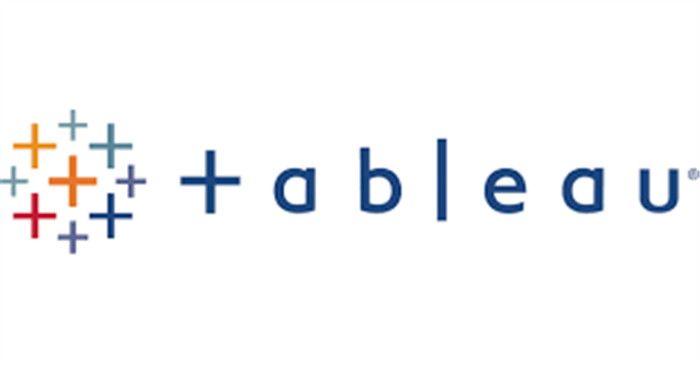
Representing data visually is a fundamental step to bridge gaps between man and machine. It allows raw analysed data to be processed to derive valuable insights to increase productivity and output. Tableau is one of the leading platforms used for data visualisation. About 50% of Fortune 500 businesses use Tableau for insight generation and data visualisation. With more companies slowly adopting Tableau, there is a growing demand for professionals skilled to use the application.
Clearing a certification exam is essential if you want to get a job. However, it is not the final step. Once you have passed the exam, you have to face critical interview questions. There’s no guarantee what you will be asked, but some questions can prepare you better for what is to come. Here are some of the most frequently asked Tableau interview questions you should prepare for:
Tableau Interview Questions and Answers:
Q. What is Tableau?
A. Tableau is one of the world’s leading business intelligence and data analytics platforms. It has a simple interface and provides a seamless experience and high flexibility for users. The most prominent features and advantages of using Tableau are its quick responsiveness, real-time analysis and interactive dashboards. Tableau also provides a range of attractive and aesthetically pleasing visualisations and graphics through which to present your data, such as graphs and charts pictorially.
Essentially, Tableau gives you every functionality you need for successful data extraction, representation, processing and visualisation. It also lets you share final dashboards, worksheets and reports with other stakeholders directly.
Q. What are the benefits and advantages of using Tableau?
A. Tableau is a business intelligence tool designed to improve data visualisation so that even non-technical stakeholders can understand and make sense of it. It doesn’t require any prior programming experience or knowledge. There are many advantages of using Tableau, like:
- Speed
- Interactive dashboards
- Easy to use
- Easy to publish and share data
- Growing market share and popularity
Q. Describe Tableau Server and its components.
a. tableau server is a tool for communication that helps share visualisations and infor mation about data connection with clients or end-users. tableau server is a critical pillar in the functioning of tableau as it manages and executes fundamental processes. several components make up tableau server:
- Application Server
- Repository
- Gateway
- Data Engine
- VizQL Server
- Backgrounder
- Data Server
- Search and License
Q. Explain the design flow in Tableau.
A. The logic flow or design flow in Tableau functions in the following way:
- Connects to data sources via connectors in Tableau
- Creates data views or visualisations like graphs and charts
- Enhances data views via advanced Tableau methodologies
- Creates different worksheets to allow diverse data views from different or the same data points
- Once worksheets are ready, it creates dashboards that can organise critical data views in one view for simple reporting
- Uses dashboards and workbooks to create stories that can relay the data more effectively
Q. What are data extract files in the context of Tableau?
A. A data extract file contains a copy of the dataset stored locally. In simpler terms, it takes a data subset from the original source. Every data extract file in Tableau contains the extension .tde. Data extract files don’t comprise file paths or any fundamental information about workbooks, the data source, or dashboards.
These files are highly optimised and compressed. This improves Tableau’s performance, mainly while using a slow connection.
You May Also Like: What is Tableau? Uses of Tableau Software Tool
Q. How would you create a .tde file in Tableau?
A. Creating a .tde Tableau data extract file is easy by following a few steps:
- Find the Data tab on the Tableau toolbar in the top left corner.
- Choose one data source.
- Find the Extract Data option and click on it.
- You can select fields from the given data source. Alternatively, click ‘Extract and create a .tde file of your entire data set directly from your data source.
Q. Explain some user functions in Tableau.
A. A user function is a unique Tableau functionality. User functions perform operations on registered users either on Tableau Online or Tableau Server. Tableau user functions help apply filters specific to users or security functions at the row-level for Tableau users.
For example, if you are looking at restricting any data view to a single user, you can use a function specific to that user like ISMEMBEROF, FULLNAME, I SUSE RNAME, ISFULLNAME, USER DOMAIN, USERNAME etc.
Q. Are there any differences between Tableau Packaged Workbook and Tableau Workbook?
A. Both of these are types of files that Tableau uses. Tableau Workbook has data regarding dashboards and worksheets present in specific Tableau workbooks. A Tableau workbook file has a .twb extension. These files can only be created from live data connections and can only be shared with users who can access this connection. Thus, .twb files have metadata that relates to your existing data connection and not the data source information given in the workbook.
Tableau packaged workbook files are different from .twb files. These files contain both metadata regarding the workbook data and the data derived from your data source. Tableau packaged workbook files have a .twbx file extension. Files with a .twbx extension are used to replace a .twb file when a workbook needs to be shared with users without access to the data connection presently lives. In this case, therefore, a .twbx file has data that can be extracted from the source and other workbook information that is necessary.
Q. What are the various types of data in Tableau?
A. Tableau can identify data that comes in. This is categorised and stored in multiple categories. There are various types of Tableau data like:
- String values (Text): This type is made up of at least zero characters or more. String values of this data type have characters enclosed in single quotes or double quotes.
- Integer values (Numbers): This data type’s values are either integer types or floating type numbers. Integer values are a numeric type of data.
- Date and time values: This category of data type is made up of date and time values in various formats. This could be dd-mm-yy, dd-mm-yy or even mm-dd-yy for dates. For time, the format used is hr: min: sec. There is also a data type for dates in Tableau that is made up of different types like a day, week, quarter, month or even year.
- Boolean values (relational, true and false): In this data type, the values are stored in the form of a relational calculation, as True or False. Thus, a boolean value is called a logical value.
- Geographical values (includes postal code, region etc.): The values of data in this type are the same as the values used on a map. These values are based on the name of a country, state, city, region or similar names that relate to a region’s geography. Geographical values are represented by a globe icon.
- Mixed values, also known as cluster group values: This type of data is assigned to any field with more than one type of data in it.
Q. What are dimensions and measures in the Tableau context?
A. Let’s first talk about dimensions. Dimension values signify the value of specific attributes or characteristics. The fields have dimension values called dimension fields. These values are not used in calculations. They are used to assign particular points to fields like the product, date, category, etc. Thus, a dimension field is a descriptive field that specifies the data type in a particular field.
Next, let’s talk about measures. A measure is a quantifiable value used in calculations. Therefore, all the values of a measure are largely numeric in nature. Only numeric values can be calculated and processed to provide results that can be analysed. For instance, sales is a measurable field with numeric values. In simple terms, sales data can be used in various analyses in many ways, such as total sales calculation, average sales, sales trends, yearly sales, forecast etc.
One fundamental difference between Tableau’s dimension and measure fields is dimension fields aren’t aggregated. On the other hand, measures are always aggregated.
Q. Explain the different function types that Tableau generally uses.
A. Tableau gives users a high level of analytical and processing freedom thanks to the available functions. With these different function types, users and analysts can carry out several analytical operations on this data.
There are a few defined categories in which Tableau functions can be classified. These are the broad categories:
String function: String functions like LOWER, ISDATE, ASCII or CHAR are called string functions. They operate upon the string characters or values and manipulate them
Date function: Date functions are used for applying arithmetic and logical operations on date values given in the data source. We can also use date functions to manipulate date values. You can change old values, create new values and search for data based on particular dates. Some common date functions Tableau contains are ISDATE, MONTH, DATEADD, MAKEDATE, MONTH, MIN/MAX, MAKETIME etc.
Logical function: Logical functions in Tableau are used for carrying out relational or logical operations on the collected data. The most common logical functions are IFNULL, CASE, ISNULL, ZN and the like.
Aggregate function: Aggregate functions in Tableau help in applying data value aggregation in various ways. The most common aggregation functions in Tableau are ATTR, MAX, PERCENTILE, MIN, AVG, SUM and the like.
User function: User functions help in managing users who are registered on Tableau Online or Tableau Server. The most common user functions used are ISFULLNAME, USERDOMAIN, FULLNAME, ISUSERNAME and the like.
To start preparing for your Tableau interview, enrol in a Tableau preparation course on Koenig today.

.pngM.jpg)

min.pngM.jpg)

.pngM.jpg)

COMMENT